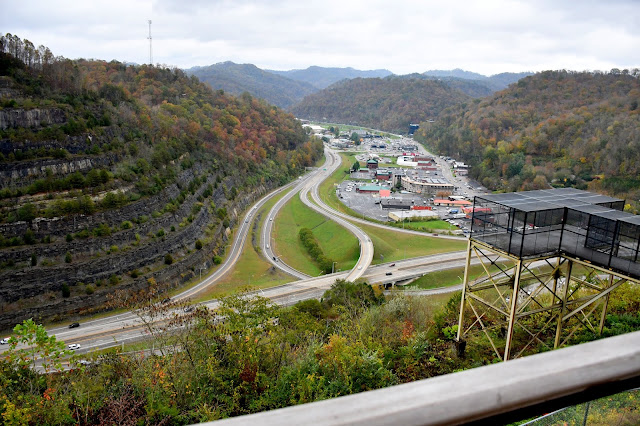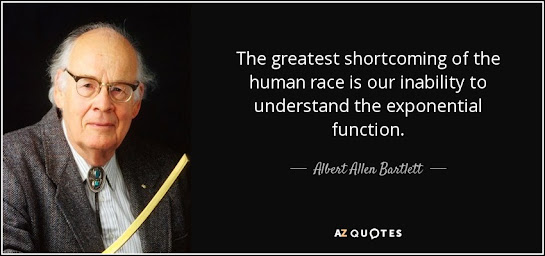How Bad is Pollution Loading?
Many people tend to forget about pollution loading as a predicament. After all, the primary focus often has more to do with more immediate concerns such as climate change, energy and resource decline (the REAL reason behind supply chain woes), disease, and other issues seen as being more important. However, when one takes into consideration how pollution loading affects the ability of animals to reproduce and the diseases they will suffer, one begins to see a more clear threat. Up until just recently, pollution loading (labeled Novel Entities on the nine-category planetary boundary scale) was not actually one of the boundaries which had been breached as it remained unquantified, but this month that changed. This leaves two unquantified sections; one part of Biosphere Integrity and Atmospheric Aerosol Loading. This article goes into the details and this study is what it is based upon.
As one can clearly see from the Pollution Loading file (link above in first sentence of this article), we've been in dangerous territory for a considerably long time. Science has finally caught up to the reality.
There are some people who think that as energy and resource decline continues, pollution loading will be reduced. They might be correct - eventually - although this is debatable. The lag effect means that pollution loading (like climate change and many other predicaments caused by ecological overshoot such as population growth) will not be reduced for quite some time after manufacturing and/or economic growth begins to seriously be reduced. Wood burning is actually more polluting than burning coal in many respects, and wildfires and burning homes and other buildings is set to increase. As fewer people will be able to afford fossil fuels, they will resort to burning whatever is available for warmth and cooking and for making water potable by boiling. I pointed out last year how the cost of coal became prohibitive in China and as a result, people began burning clothing (much cheaper) for warmth and cooking. Plastics are another source of fuel, although a particularly dirty one; releasing many toxins as it burns. You can see where I'm going with this; people will use whatever they have that they don't really need at that moment once conditions warrant. Last week, we set a new record low temperature here in Fort Wayne (-9 F on January 26) and the wind chill (-23 F) was also rather notable, although we have had worse wind chills in the past. If I didn't have electrical power or natural gas, my only other option would be to use the fireplace. I do have some wood, but what would I do when that runs out? Old furniture, plastic junk, trash, or anything else that will burn that would keep me warm would most likely be used.
One can imagine how dirty the air will become rather quickly in such a scenario. Add to this the fact that plastics tend to have all sorts of nefarious chemicals added in for various reasons which will then be released into the atmosphere. Considering that the chart above shows that we are already FAR into overload on novel entities, one can see just what an effect energy and resource decline will have. Old electronics, solar panels, plastic car parts, plastic containers of all shapes and sizes, and anything else someone thinks will burn to provide some heat will most likely be thrown into the fireplaces. What a nice thought, huh?
I posted an article last winter regarding how our ability to reproduce is being threatened by pollution loading. Based upon this study, the article explains how we are seriously poisoning ourselves with the chemicals we use daily (only some of them knowingly). We spray our food, the soil we plant our food in, the air around us, and inevitably as a result, these chemicals can also be found in lakes and waterways. Unfortunately, once these chemicals are released into the environment, there is no "away" where the chemicals can be sequestered from the plants, animals, soil, air, and water we share this planet with and they will likewise affect us negatively no differently than these other organisms.
Update September 2022: please take a look at this video with Nate Hagens and Martin Scheringer regarding PFAS pollution. Because most people focus in on climate change and other overshoot symptom predicaments, few zone in on pollution loading; and Nate is clearly alarmed in this new video. Very rarely do people ever talk about our lack of agency, but Martin specifically discusses this fact during the talk.
Update December 2022: The title of the study says it all: Gross Negligence: Impacts of Microplastics and Plastic Leachates on Phytoplankton Community and Ecosystem Dynamics. Since phytoplankton make up the base of the chain of marine life, this study makes clear what role microplastics will have as time moves forward.
Update 6-21-23: A heartbreaking new video about the tribulations of a farmer in Michigan uncovers PFAS pollution loading on a mind-boggling level, and when one takes into consideration that this is happening globally due to PFAS (just one among many pollutants in our atmosphere) now in rainwater, the entire food supply is threatened. The same set of circumstances in the video going on with the chrome plating company is happening globally due to energy and resource decline. Most all companies are trying to figure out how to trim costs and boost profits.
Update 9-28-23: The last paragraph before this set of updates includes an article from Shanna Swan about human fertility. Richard Heinberg provides this article with updated information and studies and points out how it isn't just us that is being affected. At this rate, male human sterility will be near universal by 2060.
Update 8-31-24: An article about deorbiting satellites burning up in the atmosphere provides a worrying view of what happens to all the aluminum and other materials that make up said satellites in two new studies here and here.
Update 11-17-24: Kurt Cobb explains how, quote:











Good article. From orbit, Haiti is probably the best example of resource ravages. They burn everything down to the last stump. This is set to grow exponentially over many countries in the coming decades; we're seeing the mass exodus now.
ReplyDeleteSome great points, Erik. It's truly unfortunate that we can't connect the dots between our massive resource extraction and use, and the overloading of the planetary sinks that serve to help cleanse our environment (I suppose principally because of the significant time lag that often exists between the extraction/use stage and the appearance of negative consequences; to say little about all those human factors that push to keep these consequences out of sight).
ReplyDeleteThis is also one of those aspects that the cheerleaders of 'clean' energy discount/deny/ignore in spades. The solitary focus on carbon emissions is leveraged to suggest 'renewables' are 'green' (implying they are great for the environment). Even if we leave aside for a moment all the fossil fuels required to procure and refine the necessary resources to produce the 'renewables', the mining of these resources and then disposal/recycling of the 'renewables' create A LOT of toxins/pollutants that make their way into our ecological systems and environment.
That this limit appears to have been broached by the largest amount of the nine measured boundaries says much about not only what we've already done by way of harm, but as you often argue the pursuit of technological 'solutions' to our various predicaments will just make the situation all the more grim and devastating. Of course, out of sight means out of mind.